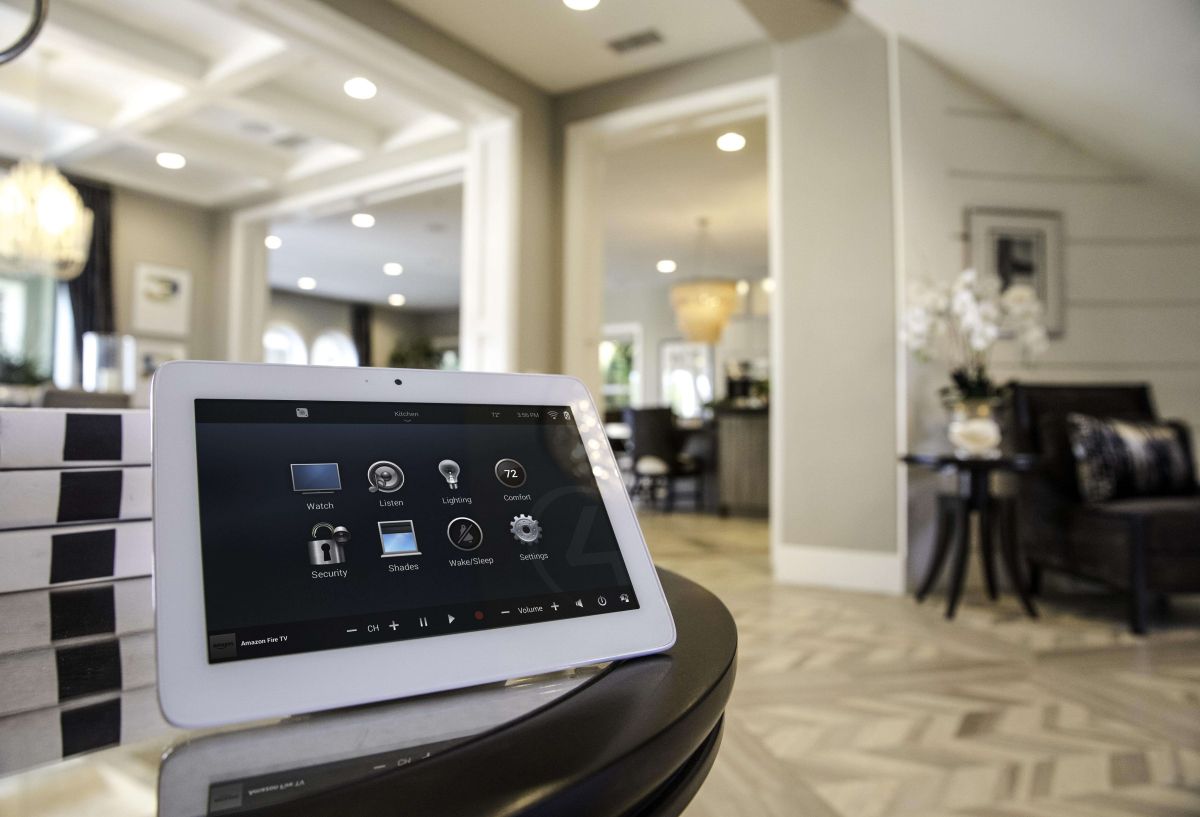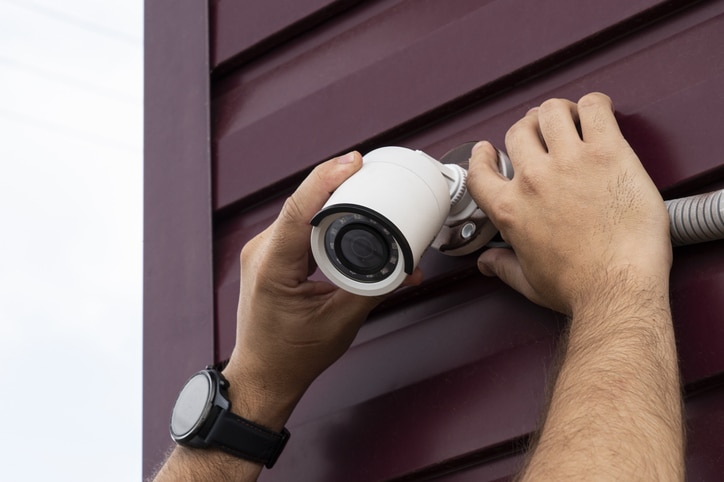Best practices for maintaining and troubleshooting smart home lighting systems are crucial for a seamless and enjoyable smart home experience. Imagine effortlessly controlling your home’s ambiance, from setting the perfect mood with warm, dim lighting for a movie night to instantly brightening your space for a productive workday—all with a tap on your phone or a simple voice command.
But this convenience comes with the responsibility of understanding how these systems work, how to keep them running smoothly, and how to tackle common problems. This guide will delve into the essential aspects of maintaining and troubleshooting your smart lighting, ensuring your home remains brilliantly illuminated and effortlessly controlled.
From understanding the different types of smart lighting systems (Wi-Fi, Zigbee, Z-Wave) and their components (bulbs, hubs, switches, apps) to mastering installation and setup, we’ll cover it all. We’ll explore routine maintenance tasks, such as firmware updates and cleaning, and provide effective strategies for troubleshooting connectivity issues, flickering lights, and unresponsive bulbs. Beyond the basics, we’ll also discuss advanced features like integrations with other smart home devices, creating automated lighting scenes, and prioritizing security measures to protect your system.
Understanding Smart Home Lighting Systems
Smart home lighting systems offer convenience, energy efficiency, and enhanced home security. They transform basic lighting into a controllable and customizable aspect of your home environment, allowing for automation and remote operation. Understanding the different types of systems and their components is crucial for successful setup and maintenance.
Types of Smart Lighting Systems
Smart lighting systems utilize various communication protocols to connect lights to a central hub or directly to your home network. The choice of system often depends on factors like range, reliability, and compatibility with existing devices.
| System Type | Pros | Cons | Compatibility |
|---|---|---|---|
| Wi-Fi | Easy setup, wide range of compatible bulbs, no hub usually required. | Can be less reliable than other protocols, higher power consumption, may experience network congestion. | Most smart home ecosystems and assistants. |
| Zigbee | Low power consumption, strong mesh networking capabilities, reliable communication. | Requires a hub, less widely adopted than Wi-Fi. | Many smart home devices, including Philips Hue and Samsung SmartThings. |
| Z-Wave | Highly reliable, strong security features, long range. | Requires a hub, higher cost compared to Wi-Fi and Zigbee, slower data rates. | Many smart home devices, particularly in security and automation systems. |
Components of a Smart Lighting Setup
A typical smart lighting setup comprises several key components that work together to provide intelligent control over your lights. These components, while not always required in every system, contribute to the overall functionality and user experience.A basic setup usually includes smart bulbs, which are LED bulbs with built-in Wi-Fi, Zigbee, or Z-Wave connectivity. These bulbs can be controlled individually or as groups.
Many systems also utilize a central hub, acting as a communication bridge between the bulbs and your home network or smart home ecosystem. Smart switches offer another layer of control, replacing traditional light switches and often integrating seamlessly with the rest of your smart home setup. Finally, a dedicated smartphone app allows for convenient control, scheduling, and automation of your smart lighting system.
Regularly checking bulb connections and ensuring your Wi-Fi is strong are key to keeping your smart home lighting running smoothly. A big part of preventing issues is proactively setting up automated schedules, and you can learn how to do that effectively by checking out this guide on setting up automated lighting schedules with different smart home systems.
Proper scheduling can actually reduce troubleshooting needs down the line, keeping your lights shining bright and reliably.
Smart Lighting Communication Protocols
Smart lighting systems rely on various communication protocols to transmit data between the light bulbs, hubs, and your smartphone. Understanding these protocols helps in troubleshooting connectivity issues and choosing compatible devices.Wi-Fi, Zigbee, and Z-Wave are the most common protocols. Wi-Fi offers broad range and ease of setup, but can be less energy efficient and prone to interference. Zigbee and Z-Wave are lower-power protocols often used in mesh networks, providing more reliable communication and longer range than Wi-Fi, though they typically require a hub.
The choice of protocol impacts the overall system performance and compatibility with other smart home devices.
Installation and Setup Best Practices

Source: cloudfront.net
Setting up your smart home lighting system correctly is crucial for a seamless and enjoyable experience. Proper installation and network configuration will minimize troubleshooting and maximize the benefits of your smart lighting. This section Artikels best practices to ensure a smooth setup process.
Smart home lighting installation varies depending on the type of device. However, there are common steps and considerations applicable across most systems.
Installing a Smart Bulb
Replacing a traditional light bulb with a smart bulb is generally straightforward. However, following these steps will ensure a successful installation and prevent potential problems.
- Check Compatibility: Before starting, verify that the smart bulb is compatible with your existing light fixture and the wattage is appropriate. Overpowering a fixture can be a fire hazard.
- Turn Off Power: Always switch off the power to the light fixture at the circuit breaker before handling any electrical components. This is a crucial safety precaution.
- Remove Old Bulb: Carefully remove your old light bulb and dispose of it properly.
- Insert Smart Bulb: Gently screw in the new smart bulb, ensuring a secure connection.
- Turn On Power: Restore power to the light fixture at the circuit breaker.
- Connect to Network: Follow the manufacturer’s instructions to connect the smart bulb to your home Wi-Fi network using a smartphone app. This usually involves downloading the app and following on-screen prompts.
- Test Functionality: Once connected, test the bulb’s functionality by turning it on and off through the app and checking different brightness levels and color options (if applicable).
Network Setup Best Practices for Optimal Connectivity
A strong and stable Wi-Fi network is essential for reliable smart home lighting control. Poor network connectivity can lead to intermittent operation, unresponsive devices, and frustrating user experiences. Here’s how to optimize your network:
- Strong Wi-Fi Signal: Ensure your router is centrally located and provides a strong signal throughout your home. Consider using a mesh Wi-Fi system for larger homes or areas with poor signal penetration.
- 2.4 GHz vs. 5 GHz: Many smart bulbs work best on the 2.4 GHz band, which offers better range. However, some newer models support both frequencies. Consult your bulb’s specifications.
- Avoid Interference: Electronic devices like microwaves and cordless phones can interfere with Wi-Fi signals. Try to position your router away from these devices.
- Secure Network: Use a strong and secure password for your Wi-Fi network to protect your smart home devices from unauthorized access.
- Regular Router Restarts: Periodically restarting your router can help resolve minor network glitches and improve overall performance.
Choosing the Right Hub or System, Best practices for maintaining and troubleshooting smart home lighting systems
Many smart lighting systems require a central hub to communicate with the devices. The choice of hub depends on your existing smart home ecosystem, budget, and desired features. Consider the following factors when selecting a hub:
- Compatibility: Ensure the hub is compatible with your smart bulbs and other smart home devices. Check for compatibility with popular platforms like Amazon Alexa, Google Assistant, and Apple HomeKit.
- Features: Consider features like voice control, scene creation, automation capabilities, and integration with other smart home systems.
- Scalability: Choose a hub that can support the number of devices you currently have and potentially plan to add in the future.
- Ease of Use: Opt for a hub with a user-friendly interface and intuitive mobile app.
- Cost: Hubs vary in price. Balance your budget with the features and capabilities you require.
Connecting a Smart Switch to a Home Network
Connecting a smart switch involves several steps, and a clear process helps ensure success. The following flowchart illustrates a typical connection process:
[Flowchart description: The flowchart would begin with “Start,” then proceed to “Install Smart Switch (following manufacturer’s instructions),” then “Connect Switch to Power,” followed by “Download and Install Manufacturer’s App,” then “Open App and Follow On-Screen Instructions for Network Connection,” then “Select Your Wi-Fi Network and Enter Password,” then “Test Switch Functionality,” and finally “End.” Arrows would connect each step sequentially.]
Routine Maintenance and Optimization
Keeping your smart home lighting system running smoothly involves more than just initial setup. Regular maintenance and optimization will extend the lifespan of your devices, improve performance, and save you energy and money in the long run. This section Artikels key practices to ensure your smart lighting system remains efficient and reliable.
Firmware Updates
Regularly updating the firmware on your smart bulbs and hubs is crucial for optimal performance and security. Firmware updates often include bug fixes, performance improvements, and new features. Ignoring updates can leave your system vulnerable to security breaches or cause compatibility issues with other smart home devices. Check the manufacturer’s instructions or app for updates; most systems will notify you when a new firmware version is available.
It’s best practice to update firmware when prompted, ensuring your system operates at peak efficiency and security.
Cleaning Smart Bulbs and Switches
Dust and grime can accumulate on smart bulbs and switches, affecting their light output and functionality. For bulbs, gently wipe them with a soft, dry cloth. Avoid using harsh chemicals or abrasive cleaners, as these can damage the surface and affect the bulb’s performance. For smart switches, use a slightly damp cloth to wipe the surface. Always ensure the power is off before cleaning any electrical component.
Regular cleaning, perhaps monthly or as needed, will maintain the aesthetic appeal and functionality of your smart lighting.
Optimizing Energy Consumption
Smart lighting offers significant energy-saving potential. Utilize features like scheduling and automation to minimize energy waste. For instance, program your lights to turn off automatically when you leave the house or when rooms are unoccupied. Consider using motion sensors to activate lighting only when needed. Leveraging the dimming capabilities of smart bulbs can further reduce energy consumption; dimming lights by 50% can reduce energy use by up to 50%.
Explore your smart home app’s energy monitoring features to track your usage and identify areas for improvement. For example, if you notice a particular room consistently uses more energy than expected, you might investigate the usage patterns or consider adjusting the brightness settings.
Keeping your smart home lighting running smoothly involves regular bulb checks and firmware updates. However, before making significant home improvements like installing extensive smart lighting, it’s wise to understand the financial implications, especially if you’re considering a property in South Korea; check out this resource on understanding South Korean property taxes and regulations to avoid unexpected costs.
Then, you can confidently focus on optimizing your smart lighting system for energy efficiency and reliability.
Troubleshooting Connectivity Issues
Connectivity problems are common with smart home devices. If a bulb or switch is unresponsive, first check the Wi-Fi signal strength. A weak signal can cause connectivity issues. Try moving your router closer to the device or using a Wi-Fi extender. Restarting your router and the smart device often resolves temporary glitches.
Ensure your smart home hub is properly connected to the internet and that your smartphone or tablet is connected to the same Wi-Fi network. If problems persist, consult the manufacturer’s troubleshooting guide or contact their customer support. Consider factors such as interference from other electronic devices; moving your router or smart device might improve connectivity. For example, if your microwave is close to your router, moving one of them to another location can help.
Troubleshooting Common Issues

Source: ssasecurity.com
Smart home lighting systems, while convenient and aesthetically pleasing, can sometimes present challenges. Understanding common problems and their solutions is key to maintaining a smoothly functioning system. This section will guide you through identifying and resolving typical issues, ensuring your smart lighting remains bright and reliable.
Common Smart Lighting Problems and Solutions
Troubleshooting smart lighting often involves systematically checking various components and connections. The following table summarizes common problems and their corresponding solutions.
| Problem | Solution |
|---|---|
| Connectivity Issues (Bulb won’t connect to Wi-Fi) | Check your router’s signal strength and range. Ensure the bulb is within range and that your Wi-Fi password is correctly entered during setup. Try restarting your router and the smart bulb. If the problem persists, check for Wi-Fi interference from other devices. Consider using a Wi-Fi extender if necessary. |
| Flickering Lights | This could be due to loose connections, a faulty bulb, or interference from other electronic devices. Check the bulb’s connections, try a different socket, and ensure no other devices are causing interference. If the problem continues, consider replacing the bulb. |
| Unresponsive Bulbs | Try restarting the bulb by switching it off and on at the wall switch. Check the bulb’s power supply and ensure it’s securely connected. If the issue persists, check the app for any updates or software issues and restart the smart home hub. |
| App Connectivity Issues | Ensure your smartphone or tablet has a stable internet connection. Restart your phone or tablet, and check the app for updates. If problems continue, try reinstalling the app or restarting your smart home hub. Contact the app developer’s support if needed. |
| Brightness Issues (Bulb not reaching full brightness) | Check the brightness settings within the smart home app. Ensure the bulb is compatible with the dimmer switch (if applicable). A dimmer switch not designed for smart bulbs can cause dimming issues. Replace the bulb if it consistently fails to reach its stated brightness. |
Resolving Network Connectivity Problems
Network connectivity issues are a common frustration. To effectively troubleshoot, begin by checking the basics: Ensure your smart bulb or hub is within range of your Wi-Fi router. A weak signal can lead to connectivity problems. Try moving the bulb closer to the router or using a Wi-Fi extender to boost the signal. Next, verify that your Wi-Fi network is functioning correctly.
Restart your router; often, a simple reboot resolves temporary network glitches. Also, check your Wi-Fi password to ensure it’s correctly entered in your smart home app. If you’ve recently changed your Wi-Fi network name or password, update the information in the app.
Diagnosing and Fixing Issues with Individual Bulbs or Switches
If a single bulb is malfunctioning, isolate the problem. First, try replacing the bulb with a known working one. If the replacement works correctly, the original bulb is faulty and needs replacing. If the problem persists with the replacement bulb, the issue likely lies with the socket or wiring. Check the socket for loose connections or damage.
If you are comfortable doing so, inspect the wiring; if you are not, consult a qualified electrician. Similarly, if a smart switch is malfunctioning, try restarting it. If that doesn’t work, check the wiring connections at the switch and the power supply. Consider resetting the switch to factory settings (instructions are usually found in the product manual).
Resetting a Smart Bulb or Hub to Factory Settings
Sometimes, a complete reset is necessary. The process varies depending on the brand and model. Generally, resetting involves holding down a button on the device for a specific duration (usually 5-10 seconds). Consult your device’s manual for the exact procedure. This will erase all previous settings and configurations, allowing you to start the setup process again from scratch.
This is a useful step if you’re experiencing persistent problems or if you’re selling or giving away the device. Remember to reconfigure the device within your smart home app after a factory reset.
Advanced Features and Integrations
Smart home lighting systems offer far more than simple on/off control. Integrating these systems with other smart home devices and utilizing advanced features unlocks a level of convenience, security, and personalization that significantly enhances the overall user experience. This section explores these advanced capabilities and how they can transform your home.Integrating smart lighting with other smart home devices creates a synergistic effect, enhancing functionality and convenience.
For example, linking your lighting to a voice assistant like Alexa or Google Home allows for hands-free control, simply saying “Alexa, turn on the living room lights.” Integration with security systems can automate lighting responses to triggered events, such as illuminating the exterior when motion is detected, acting as a deterrent and providing improved visibility.
Keeping your smart home lighting running smoothly involves regular checks on bulb connections and network stability. A key part of this is choosing the right bulbs for each area; check out this guide on choosing the right smart bulbs for different rooms and lighting needs to avoid common issues. Proper bulb selection, along with occasional firmware updates, will minimize troubleshooting headaches and maximize your system’s lifespan.
Smart Lighting Scenes and Schedules
Creating automated lighting scenes and schedules is a cornerstone of a truly smart home. Scenes allow you to pre-set combinations of lights and their settings (brightness, color, etc.) for different moods or activities. For instance, you might create a “Movie Night” scene that dims the main lights and highlights accent lighting, or a “Relaxing Evening” scene that uses warm-toned lighting at a lower intensity.
Keeping your smart home lighting running smoothly involves regular checks on bulb life and network connections. A clean home definitely helps with this, and if you need help finding reliable cleaners, check out best resources for finding reliable home cleaning services in South Korea to ensure dust doesn’t interfere with your smart system’s performance. Remember to also update your lighting system’s firmware for optimal functionality.
Schedules automate the turning on and off of lights at specific times, simulating occupancy even when you’re away, improving security and energy efficiency. Imagine your lights turning on as you arrive home each evening, or automatically dimming as you prepare for bed. This level of automation minimizes manual intervention and optimizes lighting for your daily routines.
Geofencing and Color Temperature Adjustments
Geofencing utilizes your smartphone’s location to trigger lighting actions. As you approach your home, geofencing can automatically turn on exterior lights, welcoming you with a bright and secure entrance. Conversely, it can turn off lights when you leave, ensuring energy is not wasted. Color temperature adjustments allow you to fine-tune the ambiance of your lighting. Cooler temperatures (bluish hues) are energizing and ideal for daytime settings, while warmer temperatures (yellowish hues) create a relaxed and inviting atmosphere for evenings.
Many systems allow you to adjust the color temperature throughout the day, seamlessly adapting to your changing needs.
Designing a Smart Lighting System
Designing a smart lighting system begins with assessing your needs and preferences. Consider the layout of your home, identifying areas where you want smart lighting and the desired functionality in each space. For instance, you might prioritize bright, task-oriented lighting in your kitchen and a softer, ambient glow in your bedroom. Next, choose a compatible system—either a single-brand ecosystem or a more flexible multi-brand setup.
Factor in your budget and technical expertise when selecting your hardware (bulbs, switches, hubs, etc.). Start with a few key areas and gradually expand your system as you gain experience and identify further needs. For example, you might begin by installing smart bulbs in your living room and bedroom, then later add smart switches in the hallways and outdoor areas.
Remember to plan for potential integration with other smart home devices to maximize the system’s capabilities. A well-planned system should be intuitive, reliable, and enhance your daily life.
Security Considerations: Best Practices For Maintaining And Troubleshooting Smart Home Lighting Systems
Smart home lighting systems, while offering convenience and enhanced control, introduce new security vulnerabilities that require careful consideration. Protecting your system involves a multi-faceted approach, encompassing strong passwords, regular updates, and a secure home network. Neglecting these aspects can expose your home to potential threats, ranging from unauthorized access to more serious privacy violations.Strong passwords and regular updates are the cornerstones of a secure smart lighting system.
Weak passwords can be easily cracked, allowing malicious actors to control your lights and potentially access your home network. Regular updates patch security flaws, preventing exploitation by hackers. Failing to implement these basic security measures significantly increases your risk.
Password Security and Updates
Implementing strong, unique passwords for each smart device is crucial. These passwords should be long, complex, and different from those used for other online accounts. Consider using a password manager to generate and securely store these passwords. Furthermore, enable automatic software updates for your smart lighting hub and individual bulbs. These updates often contain critical security patches that protect against known vulnerabilities.
Ignoring these updates leaves your system vulnerable to attack.
Potential Security Vulnerabilities
Smart lighting systems can be vulnerable to several security threats. One common vulnerability is a lack of robust encryption, allowing data transmitted between the lighting system and the controlling app to be intercepted. Another risk is the use of default passwords or easily guessable passwords, providing a simple entry point for attackers. Additionally, vulnerabilities in the firmware of smart bulbs or hubs can be exploited to gain unauthorized control.
Finally, unsecured Wi-Fi networks can allow attackers to easily access and compromise your smart lighting system.
Securing Your Smart Home Network
Securing your home network is paramount to protecting your smart lighting system. Use a strong and unique password for your Wi-Fi router, and enable WPA2 or WPA3 encryption. Regularly change your router’s password and keep its firmware updated. Consider using a firewall to block unauthorized access to your network. Restrict access to your network using MAC address filtering, allowing only authorized devices to connect.
Regularly scan your network for unauthorized devices. Employ a virtual private network (VPN) to encrypt your internet traffic, adding an extra layer of security when accessing your smart lighting system remotely.
Encryption and Security Protocols
Many smart lighting systems employ encryption protocols like TLS/SSL to protect data transmitted between devices and the cloud. However, not all systems are created equal, and the strength of encryption can vary. Look for systems that use robust encryption protocols and regularly check for security certifications. Additionally, consider the use of two-factor authentication (2FA) whenever possible, adding an extra layer of security by requiring a second verification step beyond just a password.
This prevents unauthorized access even if your password is compromised.
Final Wrap-Up
Mastering your smart home lighting system shouldn’t feel like navigating a complex maze. By following the best practices Artikeld in this guide, you can transform your home into a haven of effortless illumination and personalized ambiance. From initial setup and ongoing maintenance to resolving common issues and harnessing advanced features, understanding these key elements ensures a smooth, efficient, and enjoyable experience.
Embrace the power of smart lighting, and let your home shine brightly, effortlessly, and securely.
FAQ
What should I do if my smart bulb is constantly disconnecting from the Wi-Fi?
Try restarting your router and the bulb. Check for Wi-Fi interference from other devices. Ensure your bulb is within range of your router. If the problem persists, check your network’s security settings and consider resetting the bulb to factory settings.
How often should I update the firmware on my smart lighting system?
Check for updates regularly, ideally whenever prompted by your system or app. Firmware updates often include bug fixes and performance improvements, enhancing security and functionality.
Can I use smart bulbs in a dimmer switch?
Not all smart bulbs are compatible with dimmer switches. Check the bulb’s specifications before installing. Incompatible bulbs may not function correctly or could be damaged.
My smart lights are flickering. What could be causing this?
Flickering lights can be caused by loose connections, faulty wiring, or interference. Check the connections at both the bulb and the switch. If the problem continues, consider replacing the bulb or contacting a professional electrician.
How can I improve the energy efficiency of my smart lighting system?
Utilize scheduling features to automate lights turning off when not needed. Employ motion sensors to activate lights only when necessary. Choose energy-efficient bulbs with a high lumens-per-watt rating.



